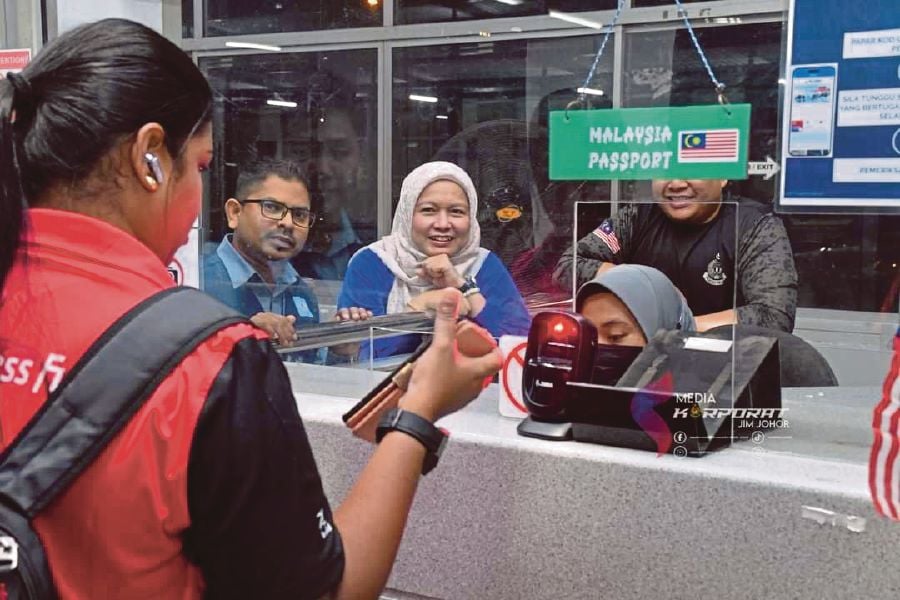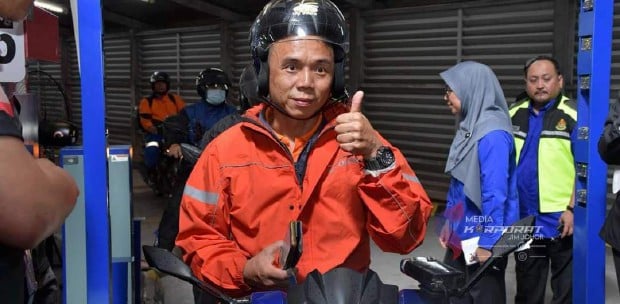ISKANDAR PUTERI: Immigration clearance now takes less than 30 seconds for Malaysian bus commuters using the new QR code system at the Immigration, Customs, Quarantine and Security (ICQS) complex serving the Second Link.
The QR code system, which began operations at the Sultan Abu Bakar Complex (KSAB) on Saturday, will be trialled for three months before it is implemented at all checkpoints nationwide.
Currently, the system is available only to Malaysians travelling through KSAB by bus and motorcycle. It can be accessed via the MyTrip function on the MySejahtera app.
A New Straits Times journalist boarded a Causeway Link bus to Singapore at Bukit Indah in Johor Baru yesterday, and arrived at KSAB in less than 30 minutes.
Upon arrival at KSAB, bunting explaining the QR code system was displayed all over the area.
The emptiness of the Immigration complex, usually packed to the brim, was striking. There were also no queues at the Immigration clearance hall.
An Immigration officer at a counter there said it was an off-peak time as it was only 4.30pm on Saturday.
The NST was told that earlier in the morning, representatives from the vendor that developed the QR code system were at hand to help travellers.
However, this journalist who had registered on the system prior to the trip, encountered some difficulties.
After scanning the machine-readable zone on her passport's biodata page, she received a notification that read "Go to counter" in bold capital letters in a red banner.
At the counter, the officer said the same thing happened to other commuters earlier that day.
He checked the system to confirm that there was no travel-ban order preventing the journalist from leaving Malaysia.
He attempted to unlink the passport registration in the app in order to re-register the passport, but was unsuccessful.
He apologised and said the MyTrip personnel had left for the day and there was no one to help, but the journalist could use her passport the conventional way to continue her journey.
But other travellers waiting at the bus stop to return to Bukit Indah later that evening mostly said the QR code system was efficient and fast.
Johan Yusof, 24, said using the system to clear Immigration took him just four seconds at 9am.
He said the MyTrip personnel at the clearance hall were helpful, and encouraged travellers to use the QR code.
Stanley Sinappen, 56, who works in Singapore as a technician, said he was pleased with the system and might start taking the bus instead of riding his motorcycle to work.
"I wanted to test the system before deciding if I should ride to work in the future.
"Today's experience was good, but then, it's not a working day. I will test it again on Monday, and if the process is smooth, then I will take a bus instead of riding my motorcycle," he said.
Toh Tee Sang, 63, who has been working as a mechanic in Singapore for 23 years, said he had a pleasant experience with the QR code system.
"I have experienced the worst traffic jams in the past, but today's travelling experience was one of the best."
However, Toh said the system would work best if all the Immigration counters were opened.
"The issue that caused long waits was because sometimes only two or three counters were open. If this continues, whatever system is implemented will go to waste."






